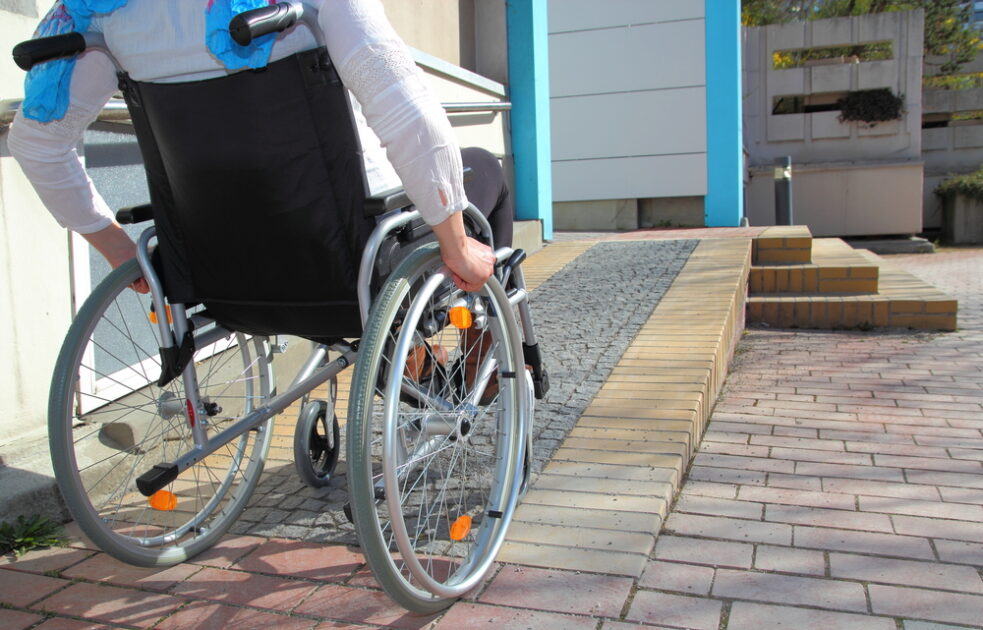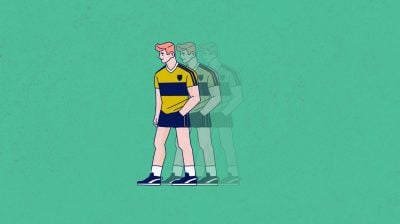Day-to-day challenges affecting wheelchair users
Edward highlights the obstacles facing wheelchair users

For someone in a wheelchair or who requires assistance in order to go from place to place, there are many challenges they face on a day-to-day basis. These are only obstacles, not barriers, but they often leave people affected asking themselves: “Is it worth my while doing that”. The following are some of the challenges wheelchair users face when it comes to simple things that most people don’t even think about and ways in which able-bodied people can help people in wheelchairs to live more of an independent life.
Transport
We’ve all been left in a situation where we cannot go somewhere we want to for one reason or another. It may be because you cannot drive and there is nobody who can have you there in time or because you have to be in two places at the one time. But what if there were people who could bring you to where you want to go or if you had nothing else on? That is often a problem disabled people have to deal with. It’s not uncommon for disabled people to have specially adapted cars to cater for their individual needs so they can get in and out of the car easily.
By having a specially adapted car, a disabled person is given the chance to get out and live the life in which an able-bodied person can. If that car is unavailable for whatever reason, the disabled person may not be able to live as full an independent life as they would like. Wheelchair taxis are great except for two reasons: there are often no wheelchair taxis available in your area, especially in rural areas and they can also be expensive if you require one day in, day out. Public transport can also be difficult for a disabled person. There are now Bus Éireann buses that are equipped to cater for a wheelchair but these buses have to be pre-booked 24 hours in advance which means planning ahead is essential. Dublin Bus provide a wheelchair spot on every bus but there is only one designated spot. That means if there is more than one wheelchair user who needs to use the bus, then one will have no choice but to wait. The train is very accommodating for wheelchair users. There are two spots on each train for wheelchairs and are very accessible to get on and off the platforms. The Luas is practically flawless for wheelchairs. Easy on, easy off. The way it should be.
What you can do:
- Try avoid using wheelchair taxis so they are available for wheelchair users to use them.
- Leave the wheelchair space free on buses and trains.
- Offer to help someone in a wheelchair in getting on to the bus, train or Luas.
Parking
Finding a car parking spot can be difficult at the best of times. Often the only spots available are minutes away leaving a tiring trek back while also having to carry shopping bags or pushing a trolley. Most car parks have designated wheelchair parking spots next to the door which mean that people in wheelchairs don’t have to push their wheelchair the whole way across the car park. These spots are for people who need them. They have space in between them for the person to get in and out of their wheelchair and have plenty of room so the wheelchair can swing around.
Able-bodied people may see a wheelchair spot free and park there because they are near the door. By doing this, the person who the spot is designed for, and needs that spot, has to make do with a normal spot or park in a way in which the person doesn’t have enough room to get in and out of their wheelchair, which is normally on a footpath or on the side of the road. It is an offence to park in a designated wheelchair spot without a permit but unfortunately, if there is no one there giving tickets most people get away with it. Taking away that spot can often take away a little bit of the wheelchair user’s self-confidence. Is trying to find a parking spot worth all that hassle?
What you can do:
- Avoid parking in designated wheelchair parking spots.
Toilets
Finding a toilet in a hurry is a position no one likes to be in. For most, when looking for a bathroom, a bathroom is a bathroom and any one will do. For a wheelchair user, finding an accessible toilet can be a nightmare. It depends on where you are. If the building is new, you can take it that there is a wheelchair accessible toilet. However, the same cannot be said for a building built before the 21st century. They may have a ‘wheelchair toilet’ but these are generally regular bathrooms with a railing beside the toilet but not enough room for a wheelchair to actually even close the door. A lot of time there may be only one accessible toilet in a building full of toilets. In the event that toilet is the other side of the building, a trip to the toilet for someone in a wheelchair may take longer than an able-bodied person. Like parking spots, able-bodied people may just see a wheelchair toilet as a toilet, leaving somebody in a wheelchair waiting for the other person to finish even though they could have just used another toilet.
What you can do:
- Avoid using disabled toilets when other toilets are available.
Lifts/Ramps
Lifts are crucial for any person in a wheelchair, or indeed any person who finds it difficult to climb stairs, to get from one story in a building to another. When lifts are not available, a person’s confidence can fall. It means that unless there are people who are willing, and able, to carry the wheelchair up the stairs, the person in the wheelchair has no real choice but to have to stay on level ground. This, like other scenarios mentioned earlier, leaves the person not being able to live a fully independent life. Nowadays, most buildings have lifts, or ramps, installed to allow for wheelchairs to be able to do all the things that able-bodied people can.
There are however reasons why a lift or ramp may not be installed:
- The building may be a historical site and a lift would make the building too modern. In this case, ramps can be installed but must be removable.
- The building may not be able to accommodate a lift or ramp.
- It may be too expensive to install and maintain a lift.
What you can do:
- Take the stairs if possible and avoid using the lift.
- Offer to push someone in a wheelchair up a ramp as it can often be difficult to push a wheelchair up a steep ramp.
Streets/Paths/Roads
An important part of a wheelchair user being fully independent is being able to do things by themselves. That includes being able to push their wheelchair on paths and streets. The paths in Irish cities are kept relatively well. But the paths and streets in towns and villages can be challenging. Potholes, fallen branches, litter and obstacles such as bins can block a wheelchair from continuing on the path or street. The person must then try to move the obstacle or see if there is someone to move it for them. If not, they may have to come off the path and go on the road.
This is not only dangerous but may not be an option as there may be no place for a wheelchair to safely come off the path. Having a clear path is essential so that people in wheelchairs can use the paths and live more of an independent life. There may also be situations where the paths or streets may not be suitable for wheelchairs. Cobbles or chippings can make pushing a wheelchair very tough. The constant shaking of the wheelchair can not only be uncomfortable but can often end up in the wheelchair turning over. There may also be damage to the wheels as the shaking may loosen the wheels and cause them to fall off. This struggle leaves many people having to go looking for softer ground so they can go along with ease.
What you can do:
- Pick up fallen branches, litter or move large obstacles aside so wheelchairs can pass.
- Offer to push a wheelchair through cobbles or chippings so they can get across easier.
Nothing mentioned above is difficult for most people but can be difficult for people in wheelchairs. By taking only a few seconds out of your time to help someone in a wheelchair or by ensuring that something which is intended to be for disabled people (car parking spot, lifts, toilets, etc.) is left free for people in wheelchairs can help wheelchair users live an independent life.






